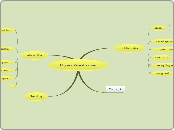arabera Rameen Sarwar 9 months ago
114
Atomic Structures & Properties
The document details various molecular geometries, their bond angles, and the number of bonded atoms and lone pairs. For instance, trigonal planar structures have three bonded atoms with bond angles of 120 degrees, exemplified by BF3.









